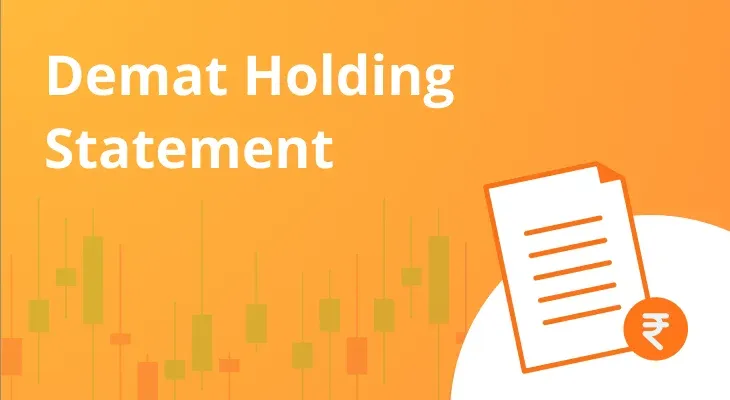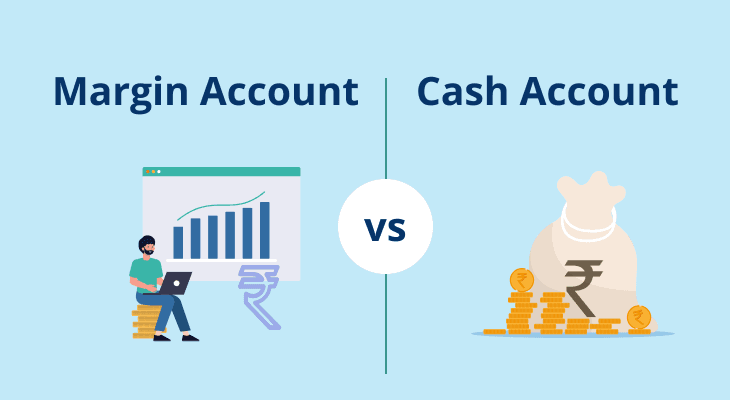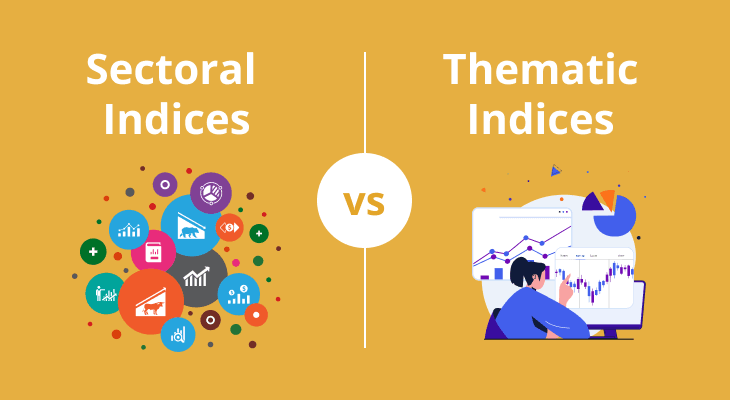
Table of content
What is Demat Account Holding Statement?
Just like a bank account holds cash deposits, FDs, etc., a Demat account is required to hold and trade shares and securities electronically. When money is credited or debited in your bank account, you can cross-verify it by checking your bank statements. Similarly, when you buy or sell shares and securities, you can check your Demat account holding statement for a detailed summary.
A Demat account holding statement provides a summary of all the shares and securities held in your account. It also contains details such as the current value of securities and date of purchase and is important for tax-filing purposes.
What does your statement of Demat holding contain?
Your Demat account holding statement shows the total value of shares and securities in your account. It consists of current, free, locked-in and pledge setup balances. The current balance is the total of all the units you hold, such as stocks, mutual funds, securities, bonds, debentures, and others. Free balance stands for the units in the Demat account that are open to being traded freely. Locked in balance refers to the assets that are not qualified for trading. And your pledge balance shows the assets pledged to a specific beneficiary.
Many investors hold multiple Demat accounts under NSDL or CDSL. A consolidated account summary is an easy way to read the Demat account statement conveniently. It is a record that holds all the transaction and investment details about depository accounts and mutual funds.
Here are some of the key details in a Demat account statement:
- Personal details: A Demat holding statement shows personal details, including name, address, and contact number.
- Folio number: Every Demat account holder gets a unique identification number, and it cannot match with another person.
- Information about mutual funds: This section informs you about the funds you own and the number of units you hold.
- Dividend payment: This section displays information when you hold a stock or a mutual fund that pays dividends.
- Transactions summary: This section displays all the debit and credit transactions during the selected period.
- Current balance: Current balance refers to the securities currently held by you in the Demat account and their value.
- Free balance: Free balance refers to securities that are free for trading and transfers.
- Locked-in balance: It refers to the currently locked-in securities that are not available for trade or transfer.
- Pledged balance: It shows the securities that you sell. These securities can be used only after the pledge is released.
How to view your Demat holding statement?
There are two ways to view your statement of Demat holdings:
- Central depository website: There are two major central depositories in India: CDSL and NSDL. All the stockbrokers in India have to register with one of these depositories to maintain the demat accounts of their customers. First identify the depository with which your broker has opened your Demat account. Then you can download the Demat account statement directly from the depository’s websites. Demat accounts registered with NSDL have 14-digit numbers, whereas those registered with CDSL have 16-digit numbers.
- Broker’s website: You can also download your Demat account statement from your broker’s website. You just have to log in to your account and access your holding statement from the dashboard. On m.Stock, the user-friendly interface allows you to view your holdings with just a few clicks.
How to Download Your Demat Account Holding Statement?
Your Demat account holding statement gives you a complete picture of all the securities you currently own, including shares, mutual fund units, bonds, and other instruments held in your demat account. You can download it anytime through your depository participant (DP) or broker. Below is a simple step-by-step guide:
- Step 1: Log in to your broker’s trading platform or mobile app using your credentials.
- Step 2: Navigate to the ‘Reports’ or ‘Portfolio’ section (naming may differ depending on your broker).
- Step 3: Select ‘Holdings Statement’ or ‘Demat Holdings’ from the available report options.
- Step 4: Choose the statement period (if applicable). In most cases, you can view it as of the current date.
- Step 5: Click on ‘Download’ or ‘View PDF’ to save the statement for your records.
Note: You can also get your holding statement directly from the CDSL or NSDL website by logging in with your BO ID and registered details.
How Often Should You Check Your Demat Holdings?
Regularly reviewing your demat holdings helps you stay updated on your investments, spot any discrepancies, and make informed decisions. The ideal frequency depends on your trading or investment style:
- Active Traders: Check holdings daily to monitor changes after trades.
- Long-term Investors: Review holdings at least once a month or after major market events.
- Post Transactions: Always verify your holdings after a buy, sell, or corporate action (bonus, split, dividend credit, etc.).
Keeping a check also ensures that any unauthorised transactions are detected early and can be reported promptly.
Demat Holding Statement vs Transaction Statement
A transaction statement is a detailed record of all buy, sell, and transfer activities in your Demat account during a specific period. It shows when and how securities moved in or out of your account. In contrast, a holding statement is like a snapshot showing the securities you currently own, without the transaction history.
Although both demat account and transaction statements are related to your demat account, they serve different purposes. Here’s a quick comparison:
Aspect | Holding Statement | Transaction Statement |
|---|---|---|
Purpose | Shows current securities you own | Shows all debit and credit transactions in the account |
Data Shown | Quantity, ISIN, value of holdings | Date-wise record of purchases, sales, corporate actions |
When to Check | To know what you currently hold | To track movement of securities |
Frequency of Update | End of trading day | Real-time or end-of-day |
Importance of monitoring your Demat holdings statement:
You may want to monitor your Demat account holding statement for the following reasons:
- Trade verification: Demat holding statements allow you to cross-verify the debit or credit of stocks. If you find an issue with the debit or credit entries, you can seek help from the customer support of your registered broker.
- Eliminates chances of misuse: Anything unmonitored for a long period increases the chances of misuse and errors. This also helps verify that your account is secure and helps you manage your portfolio effectively. Hence, it is the right approach to monitor your Demat holdings.
- Determines your net worth: Statement of Demat holdings allows you to monitor your net worth and provides a real-time view of your investments and wealth. This information plays an important role and acts as proof of investments to the bank.
- Saves from loss of dividends: It’s always a good practice to be aware of dividend-providing stocks and the company's corporate actions. You can always check if you have been credited with the correct dividends for the shares you hold.
Conclusion:
Demat account holding statement provides you with the summary of all the shares and securities you own, the date of purchase, the price at which you have purchased and their current value. It is essential to check your Demat holdings regularly to ensure the shares and securities purchased are transferred to the Demat account on time.
FAQ
How frequently is the holding statement updated?
The holding statement in your Demat account is usually updated at the end of each trading day. This ensures that any purchases, sales, or corporate actions like bonus shares and splits are accurately reflected. While depositories update daily, some brokers may also provide near real-time views for convenience, though these are not official records.
Is the Demat Holding Statement the same as my broker’s portfolio report?
No. Your Demat Holding Statement comes directly from the depository and reflects your actual securities holdings. A broker’s portfolio report, on the other hand, is generated by the broker and may include additional details like market value, unrealised gains, or advisory notes. The two may differ due to pending settlements or margin pledges.
What is a holding statement of a Demat account?
It is a statement where you can get all the relevant information about the stocks and securities you hold, including their current value, date of purchase, the price at which they were purchased, etc.
Is it mandatory to check the Demat holding statement?
It is not mandatory to check the Demat holding statement, but it is a good practice to check your statement on a regular basis so that you are aware of the debit and credit transactions of your account.
What are NSDL and CDSL?
NSDL stands for National Securities Depositories Ltd and CDSL for Central Depository Services Ltd. They are depositories responsible for holding the Demat accounts of investors.
What are the ways to see my Demat holdings?
There are two ways to see your Demat holdings. First is to download the statement from the depository website. The second is to check it on the broker’s website. Investors can login to their trading account and check their holdings within a few clicks.


